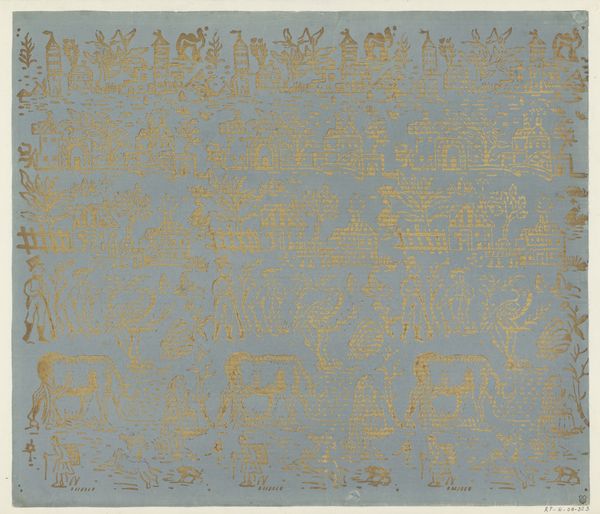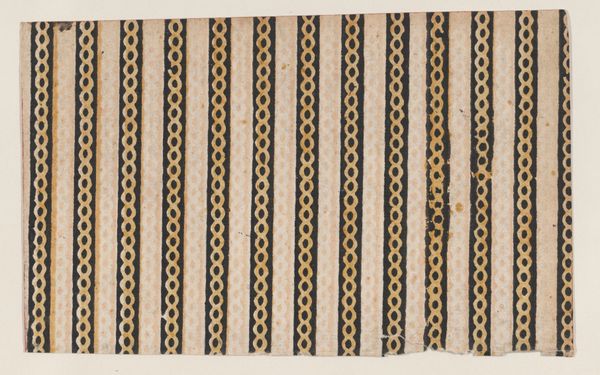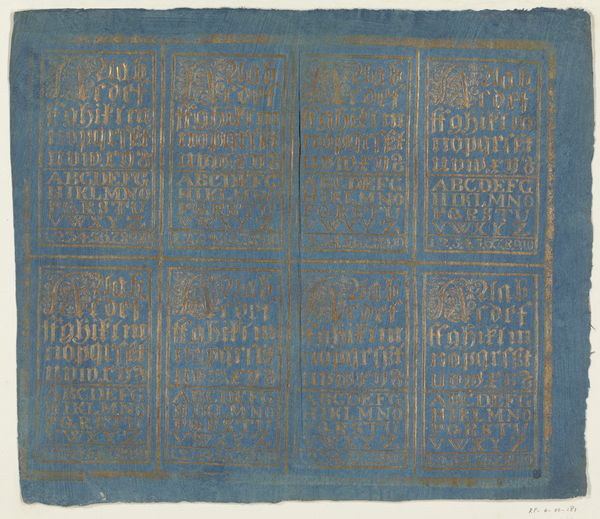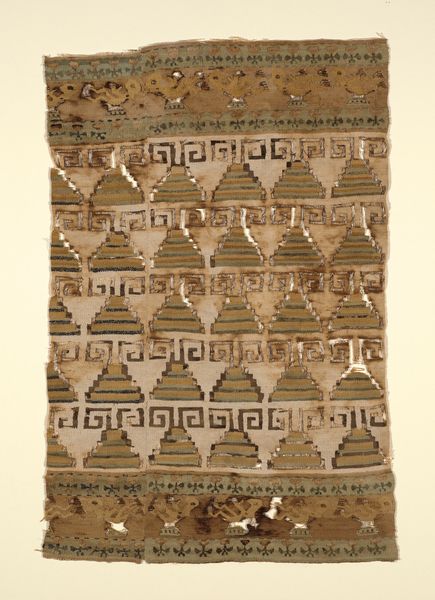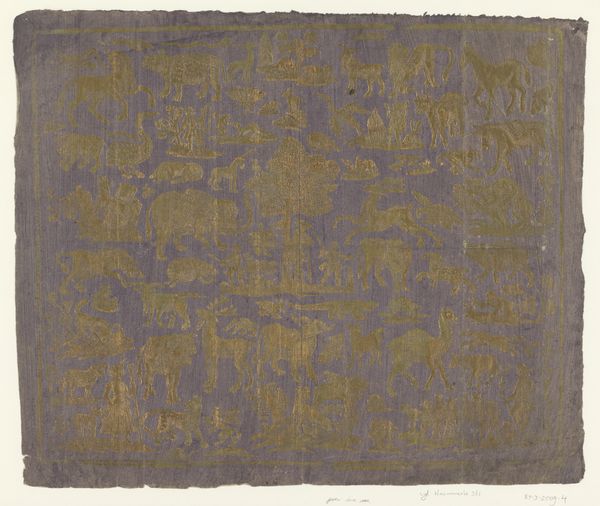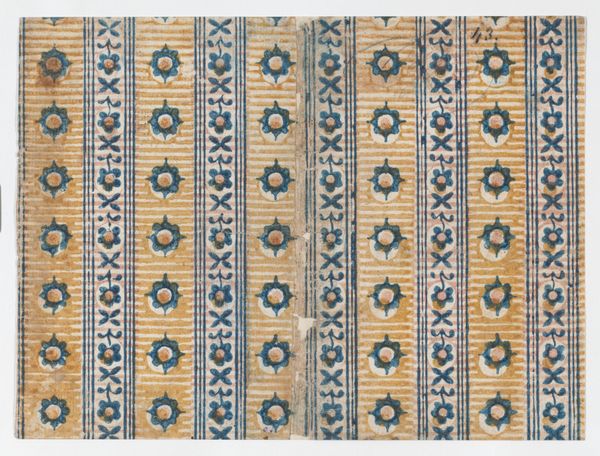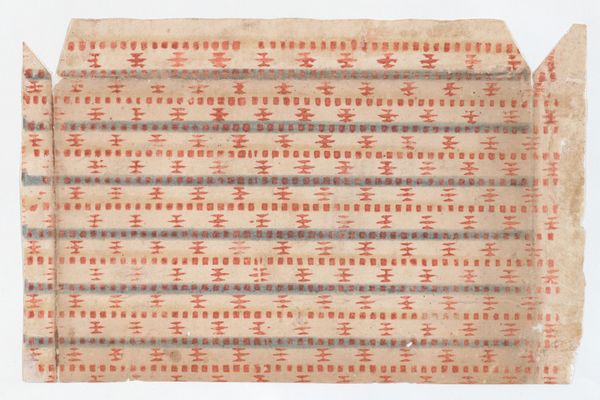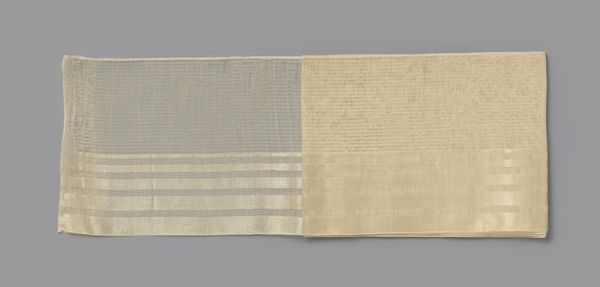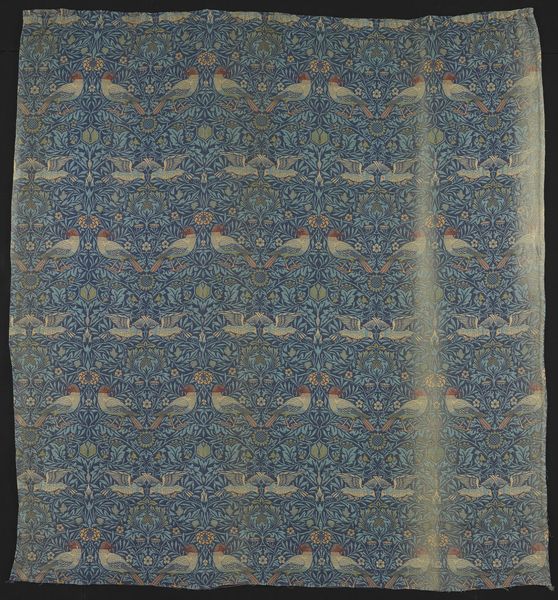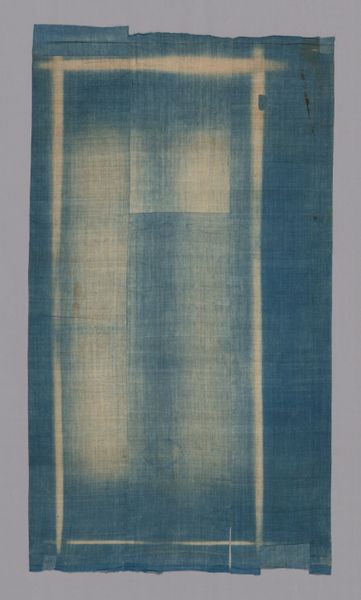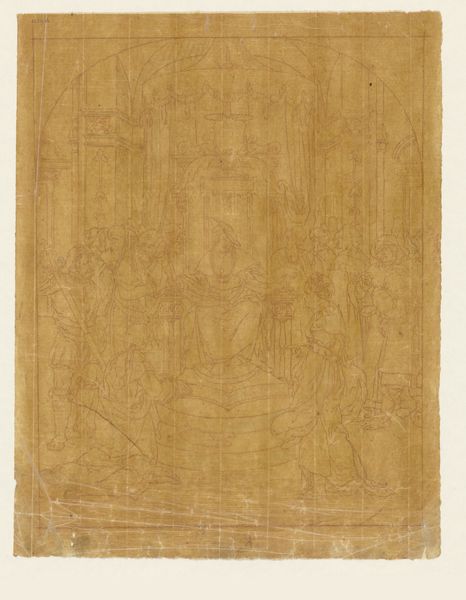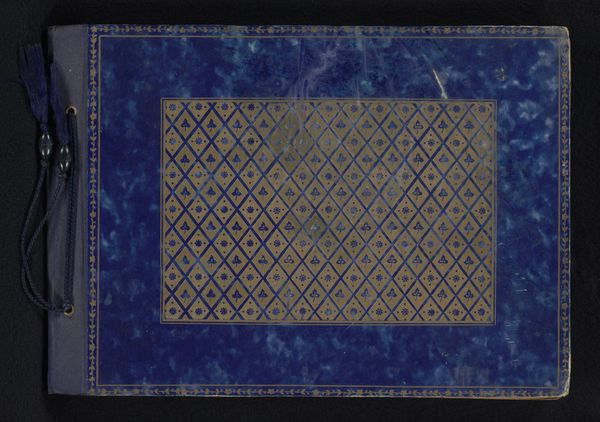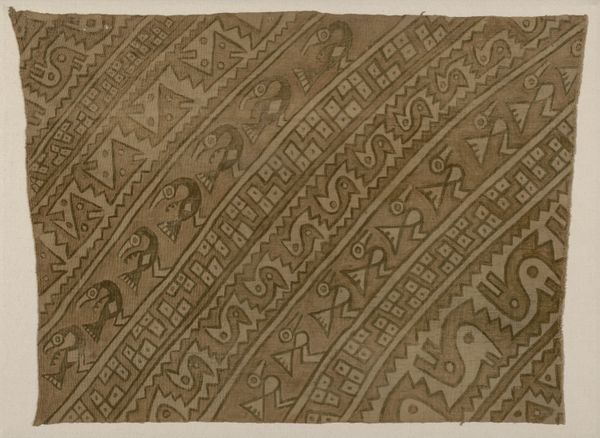
Blad met twaalf ambachten in drie rijen van vier kaders 1850 - 1920
0:00
0:00
graphic-art, print, woodcut
#
graphic-art
#
natural stone pattern
#
narrative-art
# print
#
geometric pattern
#
abstract pattern
#
organic pattern
#
geometric
#
woodcut
#
repetition of pattern
#
vertical pattern
#
pattern repetition
#
imprinted textile
#
layered pattern
#
organic texture
Dimensions: height 366 mm, width 436 mm
Copyright: Rijks Museum: Open Domain
Editor: This is "Blad met twaalf ambachten in drie rijen van vier kaders," created sometime between 1850 and 1920 by Dessauerschen Buntpapierfabrik. It's a woodcut print depicting twelve different professions. It has such a cool vintage feel, but what's particularly striking is the all-over pattern. How do you interpret this work? Curator: It’s interesting to consider this print not just as a representation of labor, but as a commodity itself. Notice the almost wallpaper-like aesthetic. This piece raises questions about the role of art in reflecting and reinforcing social hierarchies, don't you think? Editor: I see what you mean. The repetitive nature flattens out the individuality of the professions, almost like labor as a concept is being packaged. Were these prints mass-produced, intended for a wider audience? Curator: Precisely. Think about the context of the late 19th century. Industrialization was changing how people viewed work, and imagery like this, reproduced widely, helped to normalize and perhaps even romanticize different occupations for public consumption. Consider who controlled these images, and whose story was being told. Editor: That's fascinating. So, it’s less about celebrating individual craftsmanship, and more about fitting labor into a structured, consumable format. What do you think the pastel colour palette means for the representation of labour? Does this make the depicted trades seem less laborious? Curator: That's right. The pastels soften what was very difficult labor in real life, potentially giving a sugar-coated narrative to obscure labour practices, thereby controlling public perceptions. Understanding such visuals in context allows us to examine how political power is exerted in everyday objects. Editor: That’s a great insight. I hadn't considered the colours like that. It's been really interesting to learn how these prints can be more than just illustrations of professions, but a window into social and economic control. Curator: Indeed, by critically analyzing these images, we unravel the layers of societal structures and appreciate the complex power dynamics embedded within art.
Comments
No comments
Be the first to comment and join the conversation on the ultimate creative platform.
